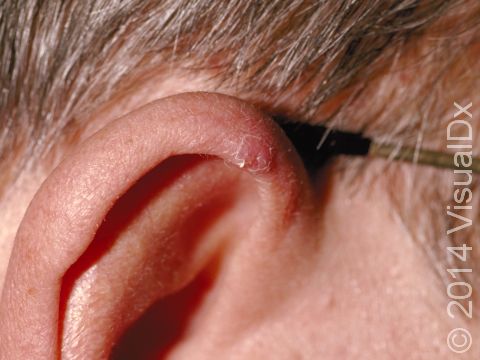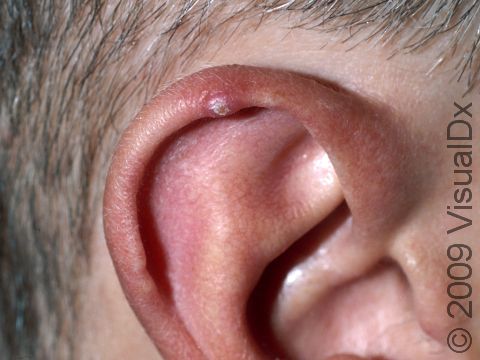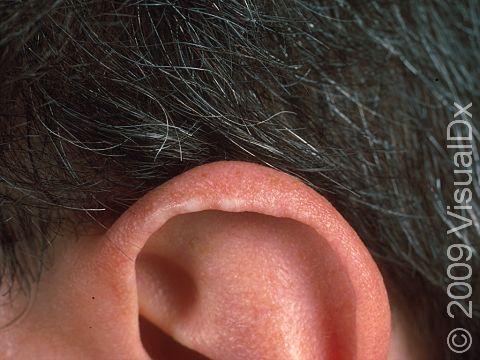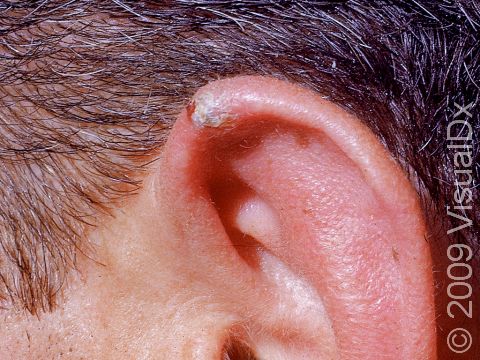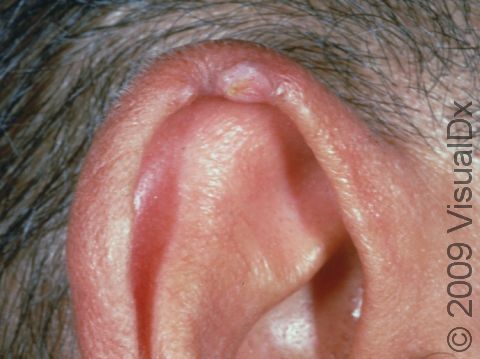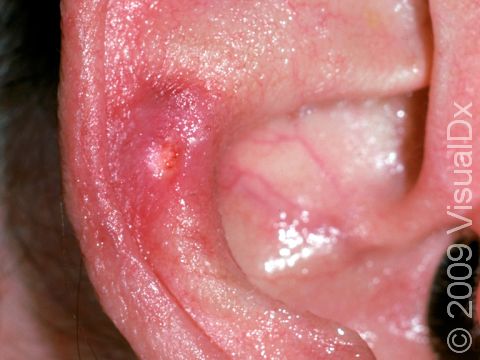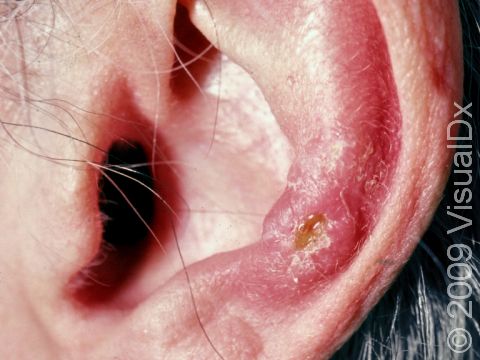Chondrodermatitis Nodularis Helicis
Chondrodermatitis nodularis helicis is a common inflammatory condition of the ear’s cartilage and overlying skin. The condition presents with very tender, small bumps (papules) or rounded lumps (nodules).
Patients have a history of preferentially sleeping on the side of affected ear and cannot avoid doing so. Repeated trauma to the cartilage is felt to promote this condition.
Who's At Risk?
Chondrodermatitis nodularis helicis can occur in most age groups and both sexes, but the typical patient is a middle-aged to elderly male with a significant history of sun exposure.
Signs & Symptoms
Chondrodermatitis nodularis helicis is located on the upper concave surfaces of the ear. Small skin-colored, extremely tender lumps are seen there, sometimes slightly scaly or crusty at the center of the lesion.
Self-Care Guidelines
Chondrodermatitis nodularis helicis can be prevented by avoiding pressure and repeated trauma to the affected ear. Positioning the head to the other side while sleeping as well as using the other ear when talking on the phone or using headsets can often lessen aggravation of the affected area.
Treatments
Your physician may recommend self-care measures, such as protecting the ear from trauma by taping a cotton ball just below the lump or surrounding the ear in a foam protector. Your physician may also suggest sleeping with the other ear to the pillow, or avoiding other means of pressure to the affected ear.
Other therapies may include:
- Injections of 5 mg/cc triamcinolone into the lump (to decrease inflammation)
- Clobetasol propionate cream
- Surgical excision (if the lesion is small)
Visit Urgency
If a painful nodule on the ear is noted, seek evaluation by a primary care provider or dermatologist. A skin biopsy may be needed to rule out a certain type of skin cancer (squamous cell carcinoma).
Trusted Links
References
Bolognia, Jean L., ed. Dermatology, pp.1400-1401. New York: Mosby, 2003.
Freedberg, Irwin M., ed. Fitzpatrick’s Dermatology in General Medicine. 6th ed, pp.778, 782-783. New York: McGraw-Hill, 2003.
Last modified on October 5th, 2022 at 7:11 pm

Not sure what to look for?
Try our new Rash and Skin Condition Finder
